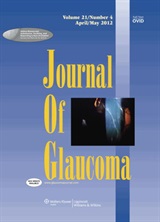Usualmente le iniezioni intravitreali non comportano un aumento patologico del tono oculare. Gli autori dello studio mettono in guardia che è sempre possibile che tale condizione si verifichi con il proseguire delle iniezioni.
Riportano una casistica di 25 occhi che dopo una media di 20 iniezioni manifestano toni molto elevati (anche 35 mm Hg).
Pertanto l’insorgenza del glaucoma, in questi occhi, deve essere sempre temuta e un regolare monitoraggio della pressione intraoculare è indicato anche per quegli occhi che non hanno mai manifestato precedenti innalzamenti.
Tseng, Joseph J.; Vance, Sushma K.; Della Torre, Kara E.; Mendonca, Luis S.; Cooney, Michael J.; Klancnik, James M.; Sorenson, John A.; Freund, K. Bailey Less
Journal of Glaucoma
April/May 2012 – Volume 21 – Issue 4 – p 241–247
Purpose: To describe a series of previously normotensive eyes experiencing sustained elevated intraocular pressure (IOP) associated with long-term intravitreal antivascular endothelial growth factor (VEGF) therapy for neovascular age-related macular degeneration (AMD).
Patients and Methods: Clinical data were reviewed for 25 eyes of 23 patients with neovascular AMD who had increased IOP while receiving interval doses of intravitreal ranibizumab and/or bevacizumab. All eyes had tolerated multiple anti-VEGF injections in the past without IOP elevations.
Results: After a mean of 20.0 anti-VEGF injections (range, 8-40 injections), the mean IOP was 29.8 mm Hg (range, 22-58 mm Hg), compared with a baseline of 16.9 mm Hg (range, 14-21 mm Hg). The mean highest IOP while receiving intravitreal anti-VEGF therapy was 35.8 mm Hg (range, 23-58 mm Hg). Overall, 23 of 25 cases required IOP management. In the remaining 2 cases, anti-VEGF dosing was switched from regular interval dosing to an optical coherence tomography-guided variable regimen, with subsequent improvement in IOP without antiglaucoma treatment.
Conclusions: Serial injections of anti-VEGF agents may lead to persistent IOP elevations that require glaucoma therapy. The clinician should recognize this phenomenon, as it can occur even if the patient has tolerated multiple prior injections without IOP elevation. Further exploration of the relationship between anti-VEGF therapy and IOP is needed.

